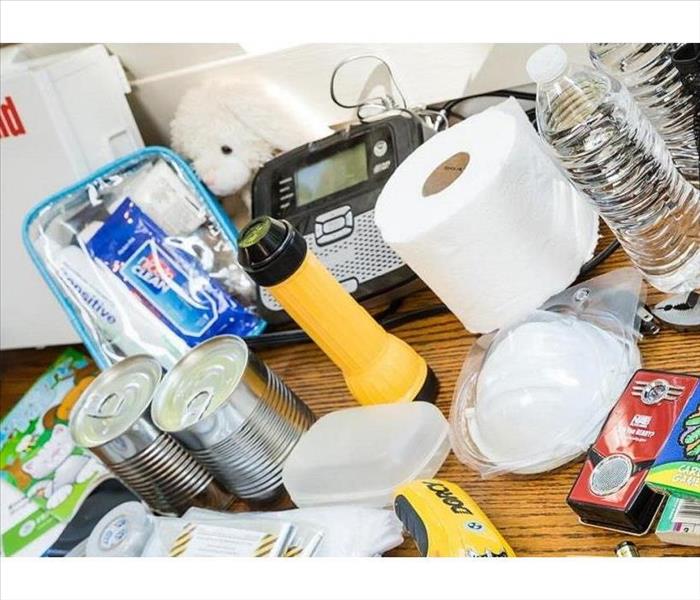Must-Haves for Your Emergency Kit, the 2020 and Beyond Version
11/6/2020 (Permalink)
 Having an emergency kit fully packed for grab-and-go is a great way for your family and pets to be prepared for whatever disaster might occur.
Having an emergency kit fully packed for grab-and-go is a great way for your family and pets to be prepared for whatever disaster might occur.
When a weather emergency or other disaster strikes that could force you to leave your home or happen while you’re away from home, there won’t be time to gather your supplies before heading to a safe space to wait it out. That is why having an emergency kit that is fully stocked and ready can make such a big difference in your survival during a disaster.
Experts recommend that your emergency kit contain enough for several days for each family member and pet, as well as some necessities such as personal hygiene supplies and emergency radios. Though we all hope we will never experience a serious disaster, having an emergency kit is the best way to obtain peace of mind and know your family will have what it needs to get by.
The Basic Emergency Kit
Every emergency kit should be tailored for individual needs and considerations, however to build an emergency kit with the bare necessities, this is what Ready.gov recommends:
- At minimum, one gallon of water per person per day for at least three days
- A three-day supply of non-perishable food per person
- Either a battery-powered or hand-crank radio for local alerts
- A NOAA Weather Radio for national alerts
- Flashlights and headlamps for each person
- A well-stocked first-aid kit, don’t forget gloves, masks and hand sanitizer for all
- Any prescription medications your family members may require
- Pet supplies including leashes, bowls, food, prescriptions and any comfort item they like. Make a copy of their license to carry with you as well for proof.
- A surplus of batteries for the flashlights and radios
- Whistles to signal for help and locate each other if necessary
- Paper towels, toilet paper, garbage bags, wet wipes and any other personal hygiene supplies
- A can opener and utensils for food
- Local maps of the area with shelters clearly marked
- Portable chargers and several cell phone charging cords
Additional Supplies for Emergencies
Having the above items is an ideal place to start, but if you have the space and ability to build out a more robust kit, there are some additional items you may want to include:
- Tools such as wrenches, hammers, nails and pliers
- Plywood in case it is necessary to barricade doors or windows
- Duct tape and plastic sheeting in case an impromptu shelter needs building
- Solar-powered chargers for using electronics long-term
- Climate-appropriate spare clothes
- Thin, camping-style blankets and small pillows
- Unscented bleach, which can be used as a disinfectant or water purifier
There are many versions of this kit out there, take your time and do some research to find the one that works best for your family. Remember to check on expiration dates or for leaking bottles and supplies, or if pests have gotten into the kit.
If you’re in need of any emergency services for your home or business due to any sort of disaster, SERVPRO of Western Dutchess County is always here to help, 24/7!





 24/7 Emergency Service
24/7 Emergency Service